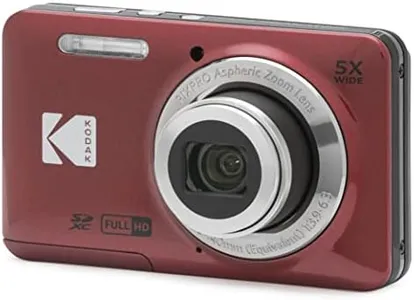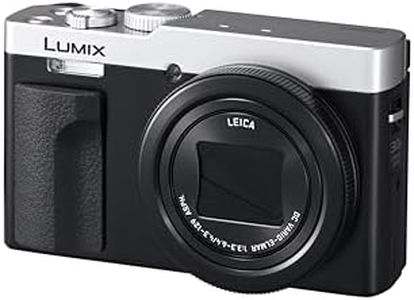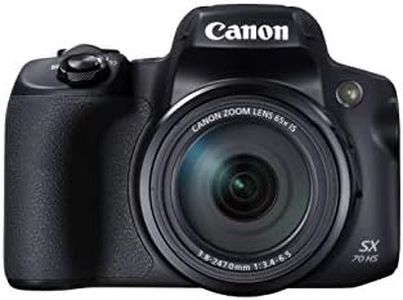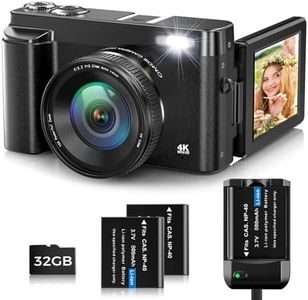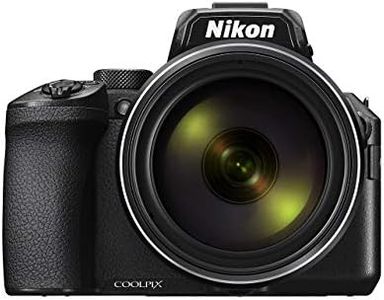We Use CookiesWe use cookies to enhance the security, performance,
functionality and for analytical and promotional activities. By continuing to browse this site you
are agreeing to our privacy policy
10 Best Superzoom Compact Camera
From leading brands and best sellers available on the web.Recommended lists
Buying Guide for the Best Superzoom Compact Camera
Choosing a superzoom compact camera can be an exciting process because these cameras offer a versatile zoom range in a small, easy-to-carry package. When comparing models, it's important to think about what you'll mostly be photographing, where you'll use the camera, and which features will make photography easier and more enjoyable for you. Superzoom compacts are great for travel, family events, and wildlife because they bring distant subjects closer without the bulk of bigger cameras. Take a look at the following key aspects and consider how each matches the way you want to use your camera.Zoom RangeThe zoom range of a camera tells you how far you can zoom in on distant subjects, usually described as a number like 30x or 60x optical zoom. This spec is important because it determines how flexible the camera is for capturing faraway objects, such as wildlife or sports, without moving closer physically. Lower zoom numbers (like 10x to 20x) are good for everyday situations and travel where you don't need to capture things very far away, and they often result in better image quality at the wide end. Mid-range zooms (25x to 40x) offer a nice balance between reach and image quality for most users. Higher zoom numbers (40x to 80x or more) are perfect for those who regularly shoot very distant subjects, though image quality may suffer at maximum zoom, and camera shake becomes more noticeable. Think about what you'll be photographing most often; if you love capturing birds or faraway action, go for more zoom, but if everyday versatility is your goal, less can be more manageable.
Sensor SizeSensor size refers to the physical dimensions of the sensor inside the camera, and it's important because it affects image quality—larger sensors generally produce clearer and less noisy images, especially in lower light. In compact superzooms, typical sensor sizes include 1/2.3-inch, 1-inch, or Micro Four Thirds. Compact cameras with 1/2.3-inch sensors are the most common and allow for longer zooms and smaller bodies but can struggle in dim lighting. 1-inch sensors offer noticeably better image quality and better low-light performance, though usually paired with moderate zoom ranges and slightly larger camera bodies. Micro Four Thirds sensors are rare in true superzooms but offer even higher quality and more creative options, usually at the cost of zoom length and portability. If image quality and low-light photography matter most to you, prioritize a larger sensor; if maximum zoom and a pocketable size are your main needs, a smaller sensor can be just fine.
Image StabilizationImage stabilization is a feature that helps reduce blur from shaky hands, especially at long zooms where even small movements are magnified. It's essential in superzoom cameras because the farther you zoom in, the harder it is to keep the camera steady. Basic stabilization will help in daylight or at moderate zooms, while more advanced systems are better if you plan to shoot a lot at full zoom or in lower light without a tripod. For those who enjoy casual photography and often shoot on the go, look for cameras that highlight strong image stabilization; it's especially important for capturing clear, sharp photos and smooth video in a variety of conditions.
Autofocus PerformanceAutofocus performance describes how quickly and accurately the camera can focus on a subject, which is critical for capturing sharp shots of moving subjects, like children, pets, or wildlife. Cameras may use basic contrast-detection autofocus, which is slower but fine for still objects, or have advanced phase-detection or hybrid systems that are much faster and better for action. If most of your subjects are stationary, nearly any decent autofocus system is sufficient. However, if you plan to photograph things that move quickly, such as sports or animals, picking a camera with faster autofocus will help you avoid missed moments.
Size and WeightThe size and weight of a superzoom camera affect how comfortable it is to carry around and use for long periods. Smaller, lighter cameras are easier to slip into a bag or even a large pocket, which makes them ideal for travel or everyday carry, though they may offer slightly less grip or shorter zooms. Larger models may be a bit bulkier but usually provide longer zooms, better ergonomics for holding, and sometimes more manual controls. Consider whether portability or having a steadier, more robust grip is more important for your shooting style and activities.
Viewfinder and LCD ScreenA viewfinder and LCD screen are the main ways you'll see what you're photographing. Most superzoom compacts have an LCD screen; some also have an electronic viewfinder (EVF), which is especially helpful in bright sunlight when screens can be hard to see. LCD screens that tilt or flip can help you compose shots from high or low angles or take selfies. If you often shoot outdoors in strong sun, an EVF is very useful. For those who like creative angles or vlogging, a tilting screen is great. Think about your usual shooting situations and pick the viewing option that will make composing your photos easiest.
